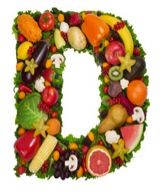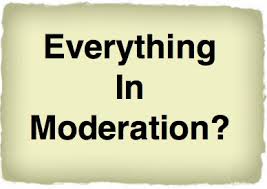To Track or Not to Track? Nutrition & fitness trackers, the good, the bad, the downright ugly30/11/2015  There are an estimated 40,000 health, fitness, and medical apps. They range from references to calculators to diaries to tracker apps, such as diabetes managers and heart rate monitors. Choosing the right app is highly dependent on what your goals are and what your lifestyle is like. Keeping consistent with entering data and understanding the information produced by the apps all impact how a dietitian might make a recommendations to clients. From an initial assessment perspective, these apps can be helpful to get an idea of where people are starting to build a diet plan. For some people, they do not know where their intake lies, letting tracking from time to time act as gauge for setting goals and making adjustments to their diets. They also serve the purpose of helping people overcome plateaus to see where there could be areas for improvement. Other benefits and uses of tracking apps include:
Are they really all that? There are many benefits and uses for tracking as seen above but when all is said and done, it is definitely not for everyone and may pose some draw backs. For starters, it can be a very tedious and time consuming task to record what is taken in, adding extra stress to an already hectic schedule. For most it is not real life to get fixated on everything that is consumed. The reality is life happens with family celebrations, nights out and sick days when chicken noodle soup and crackers become someone’s best friends. The Calorie Counting Game Many apps utilize the age old theory of calories in, calories out. They are formatted to make users believe that to lose weight, calories must be reduced (either eat less or burn more), to gain weight, calories must be added, and to maintain weight, calories kept constant. The truth of the matter is this is not completely true or simple. Yes, calories absolutely count. And, yes when someone loses weight, they generally have expended more than they consumed but there is a major misunderstanding about calories, body weight, fat loss, and health. The main part of this equation that these apps oversimplify is the calories out, only taking into consideration the calories used during activities. They are unable to take into account individual variations for resting energy expenditure, the energy used to handle basic, day-to-day physiological functions and maintenance of health and lean mass, or the thermic effect of food, the energy used to digest food and process nutrients. Someone could drop energy intake and maintain their resting metabolic rate while burning the same amount of energy digesting food (even though they’re eating less of it) and working out. Our bodies have an amazing ability to handle a surplus of calories consumed on occasion without putting on mass. So when these apps show that little red alert stating a person is over their daily calorie allowance and predicts a specific amount of weight gain, this could create negative feelings unnecessarily. These apps may create problems related to restrictive dietary rules, including the development of obsessive behaviours towards food. The same issues may be seen with calorie counting in general, where individuals may feel guilt or stress over goals, and even avoid social gatherings to prevent overages in caloric intake from occurring. Natural hunger and satiety cues should not be overlooked or forgotten in favour of eating by numbers. Others may focus solely on hitting calorie and macro targets from whatever foods they want, ignoring the importance of micronutrient rich foods from fruit and vegetables. The principles should remain the same; get plenty of nutrient-dense, minimally processed foods in the diet. Focus on food quality and caloric intake, not just one.  The Take-Away It should be noted that not all apps are created equally. Some are more user friendly, while others contain only verified, accurate statistics on food. When all this is said and done, evidence that smartphone applications actually work to promote healthy behaviors in users is scant. The usefulness can vary greatly depending on the user, it is completely individual dependent. Using these apps still pose the benefits to help some people stay on track with monitoring intake never being simpler. Whether or not you choose to use an app, the primary focus should be on building better habits and consistency with eating good quality food first. Alysha Coughler, MHSc (c), RD (c), PTS Dietetic Intern at Evolved Sport and Nutrition There's no Barrier that you can not Overcome
4 Comments
Vitamin D has been getting a lot of attention in the sports nutrition community in recent years for it’s potential benefits in performance and recovery. Since the days are getting shorter and sunlight is at an all time low, what better time than now to discuss Vitamin D! Vitamin D is a fat-soluble vitamin that promotes calcium absorption in the gut and regulates calcium and phosphorous in the blood stream, which helps maintain bone health. Vitamin D is often in the spotlight for being essential for bone health, which is true, but I think this nutrient deserves more credit than it’s given. In fact, it has a host of metabolic uses. Vitamin D regulates over 900 gene variants and can affect many processes such as exercise-induced inflammation, glucose metabolism, and skeletal muscle performance to name a few. If you’re an athlete, getting adequate amounts of Vitamin D is important to reduce your risk for things like stress fractures, muscle weakness, and cognitive functioning. Due to the chemical nature of exercising, athletes may be susceptible, if not more than the general population of becoming Vitamin D deficient. Evidence suggests that 56% of athletes are deficient in this nutrient (Farrokhyar et al., 2014). This could be a huge hindrance to your performance. What’s makes Vitamin D such a popular topic in the athletic community is the discovery of Vitamin D cell receptors in skeletal muscle tissue. It hasn’t been until recently that research has looked at Vitamin D supplementation and its effect on muscle strength, power and endurance. A recent study examined 14 elite rowers over an 8 week time period to examine the effects of Vitamin D supplementation on V02 max (the ability to transport and utilize oxygen in the blood to various tissues). One group of athletes were supplemented with 6000 IU of Vitamin D daily while the placebo group was not given any supplementation. V02 max was significantly higher in the test group compared with the placebo (Jastrzebski, 2014). This is important for endurance athletes because V02 max increases aerobic capacity. Another recent study investigated high dose Vitamin D supplementation in male soccer players. The test group showed significant improvement in their force and power production (Close et al., 2013).  But where can I get Vitamin D? Vitamin D is available from both diet and sunlight. There are two forms of dietary Vitamin D; one from plant sources and the other from animals. Plant-based Vitamin D is not as well absorbed, however. Below are examples of foods that are rich in Vitamin D: Cod Liver Oil 5 ml (1 tsp) 427 IU Salmon, sockeye/red, canned, cooked or raw 75 g (2 ½ oz) 430-699 IU Trout, Cooked 75 g (2 ½ oz) 150-210 IU Halibut, Cooked 75 g (2 ½ oz) 144 IU Dairy Milk 250 ml 91 cup) 103-105 IU Egg yolks, cooked 2 large 55-88 IU Unfortunately, sun exposure in Canada for the next few months is minimal and dietary sources of Vitamin D are quite limited. Even if you were to intake the foods listed above on a daily basis, the amount of Vitamin D is inadequate to meet needs for most individuals. The most effective way to get Vitamin D during the winter months is through supplementation. Choose Vitamin D3 tablets, otherwise known as Cholecalciferol. Health Canada recommends men and women between 19 and 70 aim for 600 IU and not to exceed 4000 IU per day. The Canadian Cancer society recommends 1000 IU per day during the fall and winter for all Canadians, and 1000 IU yearlong for those at higher risk of Vitamin D deficiency category (dark skin tones, little sun exposure year long, older adults). It is important to note that sample sizes in research studying athletes are often quite small. When you want to study an elite bunch of human beings that excel in one area, your sample pool is already quite limited. This makes it difficult for researchers to have statistically significant outcomes when studying elite athletes. Many studies that look into Vitamin D supplementation and athletics are not statistically significant because of this. But that does not mean that their outcomes aren’t important. Vitamin D is essential, and supplementation this time of year is highly encouraged by many Sports Dietitians. Do your bones, mind, and performance a favour and get some of that Vitamin D in you! Emilie Trottier, Registered Dietitian, Sports Dietitian References Farrokhyar F, Tabasinejad R, Dao D, Peterson D, Ayeni O, Hadioonzadeh R, et al. Prevalence of vitamin D inadequacy in athletes: A systematic-review and meta-analysis. Sport Med. 2014;5:365–78. Jastrzębski Z. Effect of vitamin D supplementation on the level of physical fitness and blood parameters of rowers during the 8-week high intensity training. Facicula Educ Fiz şi Sport. 2014; 2:57-67. Close GL, Russell J, Cobley JN, Owens DJ, Wilson G, Fraser WD, et al. Assessment of vitamin D concentration in non-supplemented professional athletes and healthy adults during the winter months in the UK: implications for skeletal muscle function. J Sports Sci. 2013;31:344–53. Food Sources of Vitamin D. Dietitians of Canada. http://www.dietitians.ca/Your-Health/Nutrition-A-Z/Vitamins/Food-Sources-of-Vitamin-D.aspx I can remember this vividly, a few years back someone uploaded a video to YouTube entitled “Sh*t girls say” which spawned off a whole bunch of stereotyped parody videos. Why is this relevant? Because someone decided to do a parody video entitled “Sh*t Dietitians Say” and it was extremely accurate. So accurate to the point that is highlighted the fact that all Dietitians at one point in their professional career have given the advice that “all foods fit.” “All foods fit” was a way of encompassing dietary diversity as well as recognizing and supporting better relationships with food for many people. But there is one issue and that is as a Dietitian we are trained to use an evidenced based approach to nutrition. When there isn’t any evidence then we are to rely on our clinical skills and expertise. For years “All foods fit” was given as advice when the evidence was lacking, now there is some evidence that’s definitely worth looking into.  Researchers in the University of Texas Health Science Center in Houston performed a study using 6,814 participants of varying races and genders and measured dietary diversity and it’s impact on health with different tools. These tools include the total number of different foods eaten in a week, the distribution of calories across different foods, and the differences in individual food attributes that are relevant to metabolic health (eg sodium, fiber, trans-fat etc). The researchers looked at the association of dietary diversity and changes in waist circumference in 5 years and the development of Type 2 Diabetes at 10 years. When the researchers finally gathered their data they looked at food count and evenness and found no associated changes in waist circumference or the development in diabetes. Which basically means the dietary diversity was not linked to better health outcomes. In fact, it was discovered that participants with the great diversity in their dietary intake had the greatest increase in waist circumference with 120% compared to those with the least food diversity. I know what your thinking, diversity means nothing if the food quality isn’t there right? Well the researchers took a look into this as well. Using the Dietary Approaches to Stop Hypertension (DASH) score and the alternative Healthy Eating Index (AHEL) scores it was found that dietary quality was not associated with a change in waist circumference at 5 years. However at the ten-year mark a higher diet quality was associated with a 25% lower risk of developing Type 2 Diabetes. The researchers, and I, were surprised to find that participants with greater diversity in their diets had a worse overall quality. But they found those had a higher dietary diversity were choosing more unhealthy foods than healthy foods, which could explain the relationship between less diversity in the diet and a reduced waist circumference. In fact one of the researchers went on to say that Americans with the healthiest diets actually eat a relatively small range of healthy foods, which makes complete sense because you’re focusing on higher quality foods rather then getting diversity for diversity’s sake. Ben Sit, RD, Sports Dietitian, PTS Owner, Founder and President of Evolved Sport and Nutrition Complete Lifestyle Management References University of Texas Health Science Center at Houston. (2015, October 30). 'Everything in moderation' diet advice may lead to poor metabolic health in US adults. ScienceDaily. Retrieved November 9, 2015 from www.sciencedaily.com/releases/2015/10/151030161347.htm  I’m sure you’ve all heard by now about the latest press release from the WHO (World Health Organization) evaluating the carcinogenicity of the consumption of red and processed meat. Now that the dust has settled and everyone has developed their own opinion on the matter, let’s look at it from a Sports Dietitian’s point-of-view. To summarize, on October 26th WHO released a statement based on a meta-analysis completed by Chan, Lau, Aune, et al (2011) claiming the following: “Processed meat was classified as carcinogenic to humans (group 1), based on sufficient evidence in humans that the consumption of processed meat causes colorectal cancer…” and “The consumption of red meat as probably carcinogenic to humans.” Although the pathology of why red and processed meat causes cancerous cells is not clear, they believe that it has something to do with the nitrogenous compounds that are broken down from both red and processed meat in the gut. This can cause damage to cells in the bowel and increase the risk of cancer cells to develop (Chan et al, 2011). Processed meats are rich in nitrate preservatives while red meat has an abundance of heme that can become nitrosylated, and essentially cause harm similar to that of meats rich in nitrate preservatives. Although it is a bold statement to claim that processed meat causes cancer, I don’t know what the big uproar is all about because this isn’t exactly new information. It’s been well established in the literature that processed meats have been linked with increased incidences of colorectal cancer. In 2007, an international panel of experts reported that high intakes of red and processed meat convincingly increases the risk of colorectal cancer (Chan et al, 2011). Recommendations for reducing red and processed meat have been around even since the 50s. In fact, dietary recommendations through organizations such as the Canadian Cancer Society and Dietitians of Canada have supported this for years. A quote from a handout created in 2008 from The Global Resource for Nutrition Practice: Limit red meat (beef, pork, lamb and goat) to no more than 500 g (16 ½ oz) cooked weight per week…. eat very little, if any, cured or smoked meat. If you choose to eat processed meat at all, save it for special occasions like ham at Christmas or the occasional hot dog at a hockey game. Oh and if you’re shocked, yes red meat isn’t just from beef! And processed meat includes things like ham, bacon, sausages, and basically any deli meat you can dream of. Although this information may cause bacon lovers to shed a tear and pigs around the world to snort with joy, take this information with a grain of salt. Risk is relative. The experts established that a 50 gram portion of processed meat eaten daily increases the risk of colorectal cancer by 18% (Chan et al, 2011). The risk is still quite low. The chances of developing cancer from chronic cigarette use is still much greater, even though they are placed in the same carcinogen risk group. Through all this negativity however, I think there are some positive aspects about the statements made by WHO. This might be an eye opener to individuals who are on a low carb kick for weight loss or for those trying to “eat clean”. There has been this big push in the health and fitness industry to consume more protein, often animal-based. Individuals might think twice before chowing down on 300g of deli meat for a snack and maybe opt for making a fresh salad with lean baked meats or choose vegetarian sources of protein. Nitrates aside, processed meats are excessively high in sodium and saturated fat. And reducing animal meat consumption is not only beneficial for your health, but also a more environmentally friendly way of eating. Although there is an association with red meat and colorectal cancer, red meat still has some valuable qualities. It is a great source of iron, zinc and B12 for instance. And don’t forget that in sports nutrition, it’s a beautiful pairing of complex carbs with lean protein that leads to the gains in athletics, not simply protein alone. At the end of the day, the general rule of thumb still remains the same. I don’t see the dietary guidelines changing drastically, because they have already been promoting this very thing; choose fish, seafood, poultry, and vegetarian sources of protein such as tofu and beans more often, limit your red meat to a couple times a week, and save yourself that thick cut of bacon for next time. Emilie Trottier, Registered Dietitian, Sports Dietitian References Chan, D. S. M., Lau, R., Aune, D., Vieira, R., Greenwood, D. C., Kampman, E., & Norat, T. (2011). Red and Processed Meat and Colorectal Cancer Incidence: Meta-Analysis of Prospective Studies. PLoS ONE, 6(6), e20456. http://doi.org/10.1371/journal.pone.0020456 2008. Eating guidelines for cancer prevention; meat, nitrates and barbequing. Canada: The Global Resource for Nutrition Practice. |
Categories
All
Archives
November 2021
|
- Home/ News
- About
- Services/ Store
- Media
-
Learning Center
- ESN Athletic and Healthy Lifestyle Learning Center >
-
Professional Learning Center
>
-
The ESN Sports Nutrition Certificate
>
- ESN Learning Center - Sports Nutrition Certificate Level 1 >
- ESN Learning Center Sports Nutrition Certificate Level 2 >
-
ESN Learning Center - Sports Nutrition Certificate Level 3
>
- Module 1 - Periodization for the Athlete
- Module 2 - Nutrition Strategies to Optimize Recovery
- Module 3 - Sports Nutrition for Children and Young Athletes
- Module 4 - Sports Nutrition for the Aging Athlete
- Module 5 - Nutritional Strategies for Injury Prevention and Concussions
- Module 6 - Nutritional Strategies for the Travelling Athlete
- Module 7 - Tournament Nutrition Strategies
-
The ESN Sports Nutrition Certificate
>
- Contact
Proudly powered by Weebly




 RSS Feed
RSS Feed